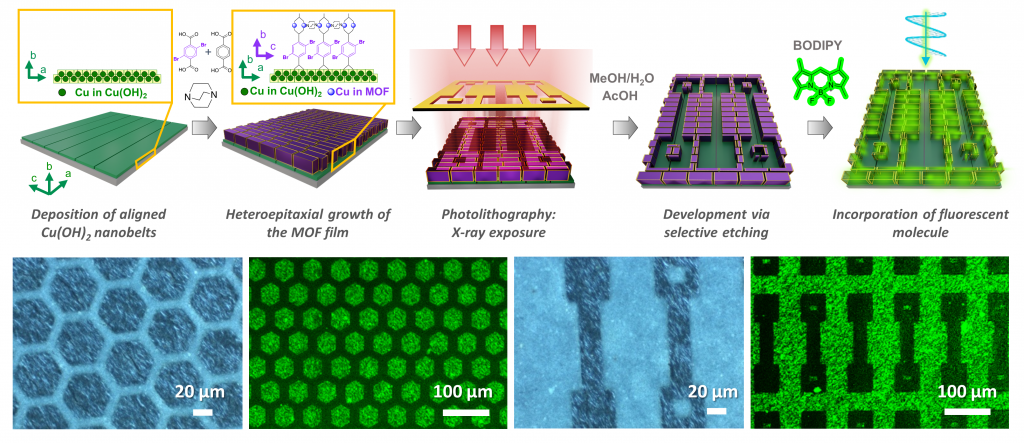Fabrication of fluorescent MOF micropatterns
|Metal-organic frameworks (MOFs) are a class of extended, typically porous, modular materials that have numerous promising applications including catalysis, separation, sensing, and optics. By selecting the building blocks (metal ions and organic linkers) that compose these so-called MOFs, it is possible to customize their chemical and physical properties. This makes MOFs, especially in the form of oriented polycrystalline films, an attractive platform material for miniaturized devices such as chemical sensors, microelectronic components, and photonic devices.

However, to further progress this field, it is necessary to develop positioning protocols that confine portions of the MOF films into predefined areas (i.e. micropatterning). In this context, Prof Paolo Falcaro, Dr Mercedes Linares-Moreau, Dr Miriam de J. Velásquez-Hernández and colleagues from TU Graz, The University of Adelaide and KU Leuven – among others – created oriented MOF patterns from aligned Cu(OH)2 nanobelt films by using a resist-free photolithographic approach. Using different instruments, including the ones available at the DXRL beamline at the Austrian CERIC partner facility (in Elettra Sincrotrone Trieste), the scientists exposed the MOF system to X-ray radiation through a lithography mask. This procedure led to chemical and structural changes in the unmasked regions. The subsequent immersion of the samples in a developer solution caused the selective dissolution of the MOF in the X-ray-exposed regions, revealing localized MOF patterns. The obtained patterns were then characterized using a series of techniques, including X-ray diffraction, FT-IR spectroscopy, scanning electron microscopy and Raman spectroscopy. Finally, the researchers incorporated fluorescent dye molecules within the oriented pore channels of the MOF patterns. The resulting material showed directional photoluminescent response.
The developed protocol, which combines precisely oriented MOF films with micropatterning techniques, could be used in the future to integrate MOF components with specific functional properties, such as fluorescence, into miniaturized and photonic devices.
ORIGINAL ARTICLE:



